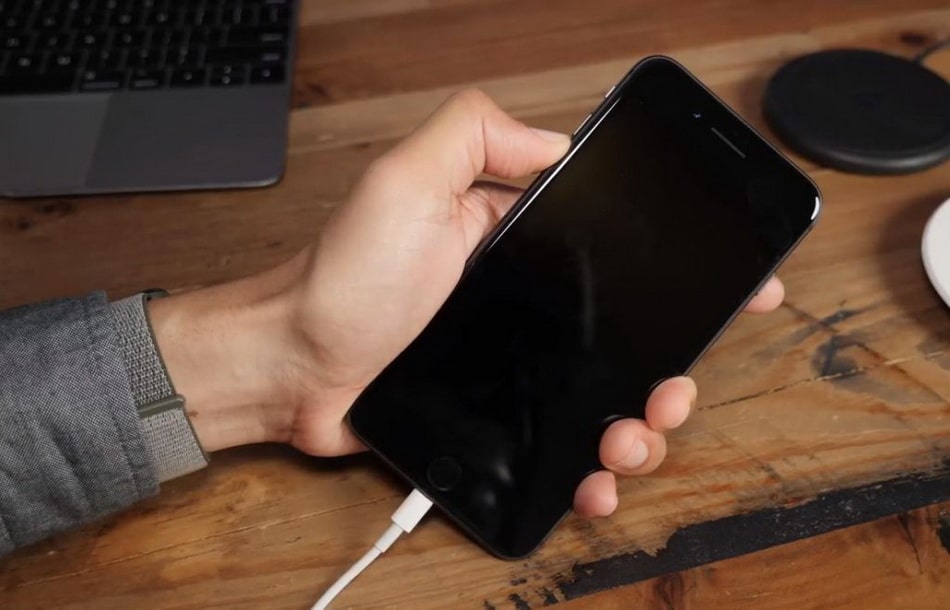If your cell phone suddenly won’t turn on, there could be several reasons why. Whether it’s a technical defect or a simple operating error, we explain what’s behind it and what solutions are available.
Possible reasons why your cell phone won’t turn on and how you can respond
A broken smartphone is a nightmare for many of us. When our cell phone won’t turn on, we are often at a loss. But don’t worry, there are several ways to identify the problem and possibly fix it yourself.
- One of the most common reasons why a cell phone won’t turn on is a dead battery. This is often overlooked, especially if the device has been used more than usual recently. In such cases, it helps to connect the charger and charge the cell phone for a few minutes before trying to turn it on again.
- Another common reason could be a faulty charging cable or charger. If the cable is damaged or the adapter is not working properly, the cell phone may not charge even though it is connected. Try using a different cable or charger to rule out this error.
- Sometimes a software problem can prevent the phone from starting. A forced restart can help reset the device and eliminate any software errors. To do this, press and hold the power button and another button (usually the volume or home button) simultaneously until the logo appears.
- Another obstacle could be a deeply discharged battery that cannot be charged immediately. In this case, the device should be left on the charger for several hours to slowly recharge the battery.
Technical defects on your cell phone: How to identify the causes
Once the basic problems have been ruled out, it is worth looking at more specific causes. Some problems are less obvious, but still relatively common.
- Water or moisture damage is a common cause of mobile phones no longer working. Even if the mobile phone looks dry on the outside, moisture may have penetrated the internal components. Check the moisture indicators in the SIM card slot or elsewhere to determine whether water is involved.
- Physical damage, such as dropping or impact, can also cause the phone to stop working. Internal connections may be loose or components may be damaged. A visual inspection of the case can provide clues as to whether external influences are to blame.
- A defective power button can also prevent the device from turning on. If the button is stuck or does not respond at all, this could be the problem. It often helps to carefully clean the button or check whether dirt or dust has accumulated underneath it.
- Sudden power drops or surges during charging can damage electronic components. This type of damage is difficult to diagnose yourself and usually requires professional help.
Software errors prevent the mobile phone from turning on: How to fix the problem
The problem is not always with the hardware. Often, it is software errors that cause the mobile phone to freeze. However, these can often be fixed relatively easily.
- A crashed operating system can prevent your phone from starting up. A soft reset can solve this problem. This is done by pressing and holding certain buttons simultaneously until the device restarts.
- Updates that were interrupted mid-process can also cause startup problems. Try starting the device in safe mode to check whether recently installed apps or updates are the cause.
- A full memory can slow down the system or cause it to crash. If the phone is still responding, try deleting unnecessary data or uninstalling apps to free up space.
- In some cases, a complete reset to factory settings is necessary. This will delete all data, so this step should only be considered as a last resort.
Cell phone won’t turn on? When to seek professional help
If your cell phone still won’t turn on after trying all of these measures, it’s time to seek professional help. Experts can perform more in-depth diagnostics and repairs.
- If your cell phone still does not respond despite all your DIY attempts, there may be a serious technical problem. A visit to a certified repair service may then be the best option. These experts have special tools and experience to diagnose complex problems.
- Warranty claims should be considered if the device is still under warranty. Manufacturers often offer free repairs or replacement devices, provided that the fault is not your fault.
- In some cases, it may be necessary to replace individual components, such as the battery or screen. A professional can quickly replace these parts and test whether this resolves the problem.
- If the problem is irreparable, the only option may be to purchase a new cell phone. Professionals can offer advice and help you find a model that suits your needs.

